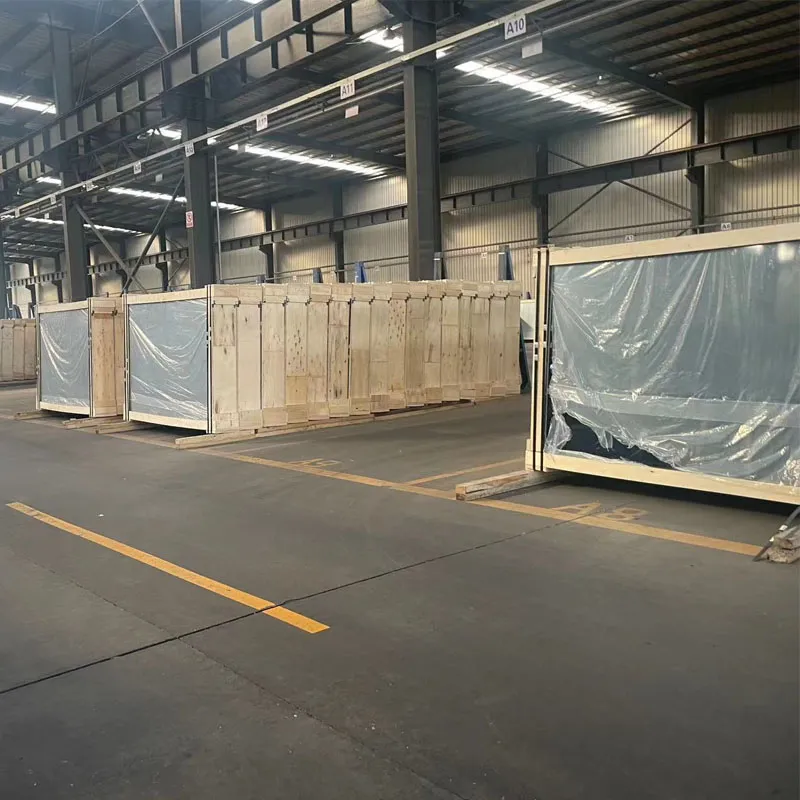Understanding Float Glass The Basics and Significance
Float glass is a type of glass that has become a fundamental material in construction, architecture, and various industries. Its unique manufacturing process and exceptional properties make it a preferred choice for windows, facades, and countless applications. This article delves into what float glass is, how it is made, its advantages, and its relevance in modern life.
What is Float Glass?
Float glass is characterized by its flat and smooth surface, achieved through a specific manufacturing process called the float process. This method involves melting raw materials, primarily silica sand, soda ash, and limestone, into molten glass. The molten glass is then poured onto a bed of molten tin, allowing it to float and spread evenly. As it cools, it forms a continuous sheet of glass that is uniform in thickness and devoid of distortion.
The term float reflects the glass's journey on the surface of tin, which creates consistently flat surfaces essential for various applications. The result is a transparent material that can be further processed through cutting, polishing, and coating to meet specific needs.
The Manufacturing Process
The float glass production process can be summarized in several key steps
1. Melting The raw materials are mixed and melted in a furnace at temperatures exceeding 1,700 degrees Celsius.
2. Floating The molten glass is poured onto the molten tin surface, where it spreads into a flat shape due to gravity and surface tension.
3. Annealing After achieving the desired thickness, the glass is slowly cooled in an annealing lehr, reducing internal stresses and ensuring uniform thickness.
4. Cutting Finally, the glass is cut into sheets of various sizes for distribution.
This meticulous process results in float glass with exceptional clarity, optical quality, and surface smoothness, making it an invaluable resource across industries.
float glass means
Advantages of Float Glass
Float glass has several advantages that contribute to its popularity
- Clarity and Transparency It maintains high optical quality, allowing for maximum light transmission, which is crucial in applications like windows.
- Uniform Thickness The float process ensures consistent thickness across the entire sheet, making it easier to work with in construction.
- Surface Flatness The smooth surface is ideal for aesthetic applications and allows for easy cleaning.
- Versatility Float glass can be further treated, such as laminated, tempered, or coated to enhance safety, energy efficiency, and aesthetics.
- Sustainability Glass is recyclable, and the float glass production process is designed to minimize energy consumption and waste.
Applications of Float Glass
The applications of float glass are vast and varied. In architecture and construction, it is used for windows, curtain walls, skylights, and glass doors. Its aesthetic appeal and functionality make it a staple in modern buildings. Additionally, float glass is utilized in automotive industries for windshields and side windows, as well as in household items such as mirrors and table tops.
In recent years, the demand for energy-efficient buildings has increased the use of coated float glass, which reflects heat and UV rays, thus improving thermal insulation and reducing energy costs.
Conclusion
In conclusion, float glass stands as a testament to innovation in material science. Its unique manufacturing process creates a product that is both functional and aesthetically pleasing, fulfilling a myriad of roles in contemporary society. As technology advances, the potential for further enhancements in float glass continues to expand, promising exciting developments for future applications in architecture and beyond. Understanding float glass and its significance allows us to appreciate the materials that shape our world and environment.
 Afrikaans
Afrikaans  Albanian
Albanian  Amharic
Amharic  Arabic
Arabic  Armenian
Armenian  Azerbaijani
Azerbaijani  Basque
Basque  Belarusian
Belarusian  Bengali
Bengali  Bosnian
Bosnian  Bulgarian
Bulgarian  Catalan
Catalan  Cebuano
Cebuano  Corsican
Corsican  Croatian
Croatian  Czech
Czech  Danish
Danish  Dutch
Dutch  English
English  Esperanto
Esperanto  Estonian
Estonian  Finnish
Finnish  French
French  Frisian
Frisian  Galician
Galician  Georgian
Georgian  German
German  Greek
Greek  Gujarati
Gujarati  Haitian Creole
Haitian Creole  hausa
hausa  hawaiian
hawaiian  Hebrew
Hebrew  Hindi
Hindi  Miao
Miao  Hungarian
Hungarian  Icelandic
Icelandic  igbo
igbo  Indonesian
Indonesian  irish
irish  Italian
Italian  Japanese
Japanese  Javanese
Javanese  Kannada
Kannada  kazakh
kazakh  Khmer
Khmer  Rwandese
Rwandese  Korean
Korean  Kurdish
Kurdish  Kyrgyz
Kyrgyz  Lao
Lao  Latin
Latin  Latvian
Latvian  Lithuanian
Lithuanian  Luxembourgish
Luxembourgish  Macedonian
Macedonian  Malgashi
Malgashi  Malay
Malay  Malayalam
Malayalam  Maltese
Maltese  Maori
Maori  Marathi
Marathi  Mongolian
Mongolian  Myanmar
Myanmar  Nepali
Nepali  Norwegian
Norwegian  Norwegian
Norwegian  Occitan
Occitan  Pashto
Pashto  Persian
Persian  Polish
Polish  Portuguese
Portuguese  Punjabi
Punjabi  Romanian
Romanian  Russian
Russian  Samoan
Samoan  Scottish Gaelic
Scottish Gaelic  Serbian
Serbian  Sesotho
Sesotho  Shona
Shona  Sindhi
Sindhi  Sinhala
Sinhala  Slovak
Slovak  Slovenian
Slovenian  Somali
Somali  Spanish
Spanish  Sundanese
Sundanese  Swahili
Swahili  Swedish
Swedish  Tagalog
Tagalog  Tajik
Tajik  Tamil
Tamil  Tatar
Tatar  Telugu
Telugu  Thai
Thai  Turkish
Turkish  Turkmen
Turkmen  Ukrainian
Ukrainian  Urdu
Urdu  Uighur
Uighur  Uzbek
Uzbek  Vietnamese
Vietnamese  Welsh
Welsh  Bantu
Bantu  Yiddish
Yiddish  Yoruba
Yoruba  Zulu
Zulu 

